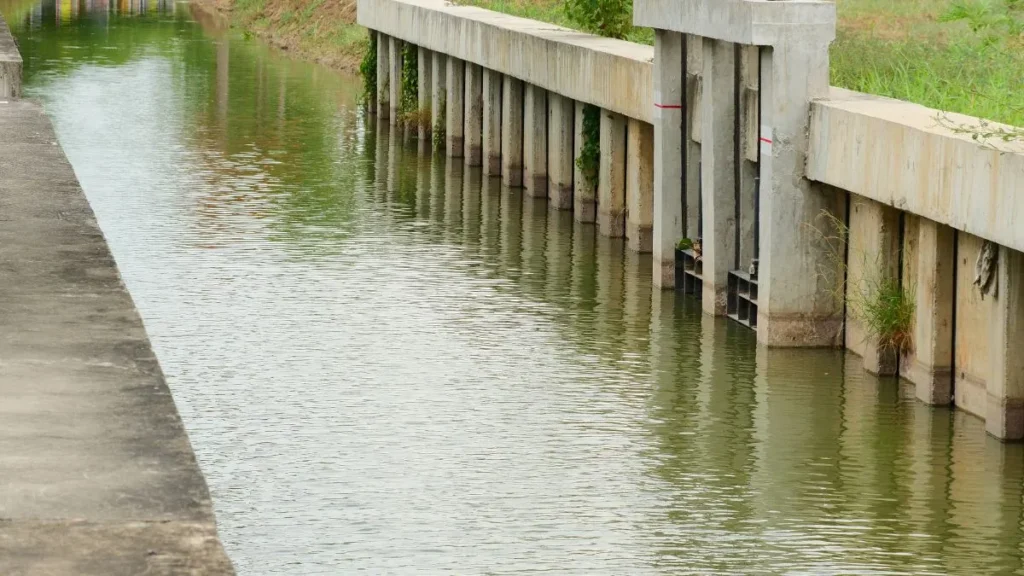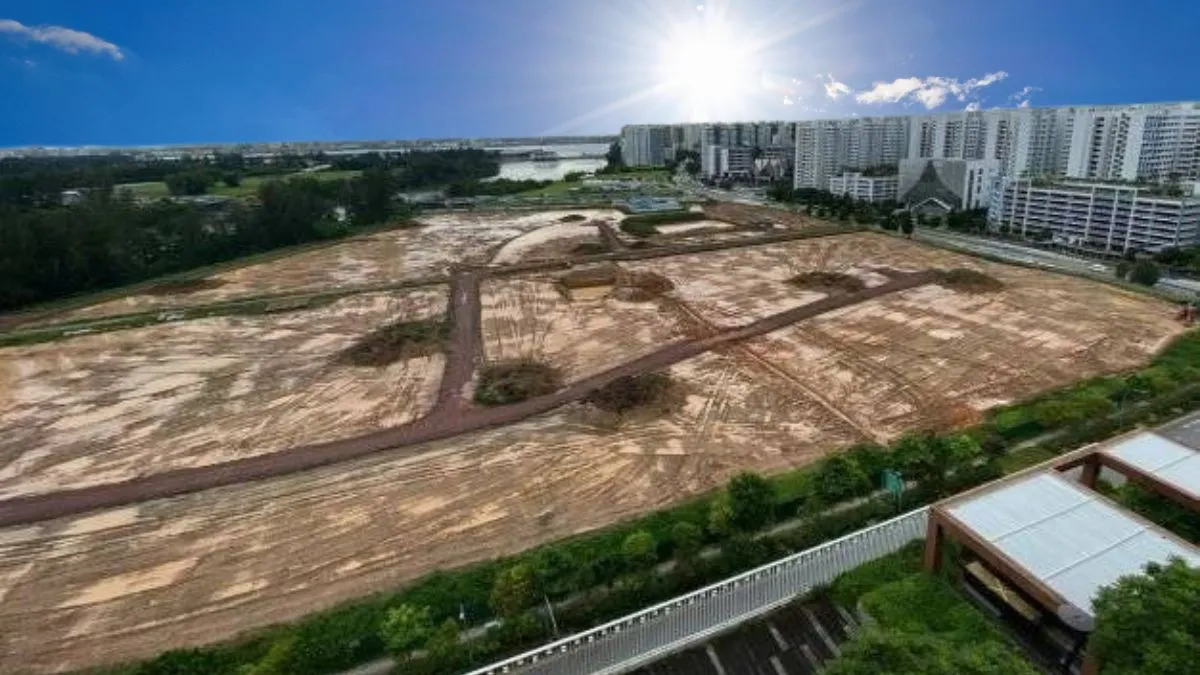In urban environments, particularly in areas undergoing rapid development, the integrity of natural water bodies is often compromised by construction activities. After a heavy downpour, it’s not uncommon to see waterways turn brown due to the influx of silt washed down from exposed earth surfaces and construction sites. This phenomenon highlights the urgent need for effective Earth Control Measures (ECM) to prevent the contamination of water bodies and maintain ecological balance.
Understanding Earth Control Measures (ECM)
Earth Control Measures (ECM) are a set of practices designed to manage soil erosion, sediment control, and stormwater runoff within construction sites. The primary goal of ECM is to minimize the environmental impact of construction activities, particularly the discharge of Total Suspended Solids (TSS) into public waterways. TSS refers to the particles suspended in water that can include silt, clay, organic matter, and other debris, which can severely affect water quality and aquatic life.
Components of Earth Control Measures
- Education and Engagement: Public Utilities Board (PUB) emphasizes the importance of educating stakeholders, including construction companies, contractors, and site managers, on the significance of Earth Control Measures. Regular training sessions, workshops, and awareness programs are conducted to ensure that all parties are well-informed about best practices in erosion and sediment control.
- Technology Upgrading: Incorporating advanced technologies in Earth Control Measures is crucial for enhancing their effectiveness. Innovations such as silt fences, sediment basins, and erosion control blankets help in trapping sediment and preventing it from entering water bodies. PUB encourages the adoption of such technologies to improve the overall efficiency of Earth Control Measures.
- Good ECM Practices: Adhering to good ECM practices is fundamental in managing construction site runoff. These practices include proper site planning, timely implementation of erosion control measures, and regular maintenance of Earth Control Measures installations. Good practices also involve minimizing exposed soil areas, stabilizing slopes, and ensuring that stormwater is properly managed.
Exclusions from ECM
While Earth Control Measures covers a broad range of activities, it specifically excludes the management and treatment of sludge and bentonite waste from bore-piling works and diaphragm wall construction. These processes generate different types of waste that require specialized handling and disposal methods outside the scope of typical Earth Control Measures practices.
Regulatory Framework and Compliance
To ensure the effective implementation of ECM, regulatory frameworks are established, mandating compliance from all construction stakeholders. In Singapore, for instance, the PUB requires building contractors to submit an ECM plan designed and endorsed by a Qualified Erosion Control Professional (QECP) before commencing any construction work.
ECM Plan Submission
The ECM plan is a comprehensive document outlining the specific measures that will be implemented to control soil erosion and sediment discharge on a construction site. It includes detailed site assessments, proposed erosion control measures, sediment control practices, and maintenance schedules. The QECP, a certified professional in erosion and sediment control, ensures that the plan meets all regulatory requirements and is tailored to the specific conditions of the construction site.
Monitoring and Enforcement
Once the ECM plan is approved and implemented, ongoing monitoring is essential to ensure compliance. Regular inspections by regulatory authorities, such as PUB, help in identifying any lapses in ECM practices and enforcing corrective actions. Contractors are required to maintain records of their ECM activities and provide these records during inspections.

Effective ECM Strategies
Several strategies can be employed to enhance the effectiveness of ECM on construction sites:
- Silt Fences and Sediment Basins: Silt fences are temporary barriers made of geotextile fabric that are installed around the perimeter of construction sites to trap sediment-laden runoff. Sediment basins, on the other hand, are engineered structures designed to capture and settle out sediment from stormwater before it is discharged.
- Erosion Control Blankets: These are protective coverings made from biodegradable materials that are placed on exposed soil surfaces to prevent erosion. They help in stabilizing the soil, promoting vegetation growth, and reducing the velocity of surface runoff.
- Stabilization Practices: Stabilizing exposed soil areas using vegetation, mulching, or synthetic covers is a key strategy in ECM. Vegetation, in particular, helps in binding the soil together, reducing erosion, and improving the aesthetic appeal of construction sites.
- Proper Site Planning: Effective site planning involves minimizing the extent of land disturbance and phasing construction activities to reduce the exposure of soil surfaces. This approach not only helps in managing erosion but also ensures that ECM practices are implemented efficiently.
- Stormwater Management: Managing stormwater runoff is critical in preventing sediment-laden water from leaving construction sites. Techniques such as swales, check dams, and retention ponds are employed to slow down the flow of stormwater, allowing sediments to settle out before the water is discharged.
Case Study: ECM in Concrete Structure Demolition Works
Concrete structure demolition works often pose significant challenges in managing soil erosion and sediment control. The demolition process generates a substantial amount of debris and exposes large areas of soil, making it crucial to implement robust ECM practices.
Implementing ECM in Demolition Works
- Pre-Demolition Planning: Before the demolition begins, a detailed ECM plan is developed, highlighting specific measures to control erosion and sediment. This includes identifying sensitive areas, designing sediment control installations, and scheduling the demolition activities to minimize soil exposure.
- Installing Sediment Control Measures: During the demolition process, silt fences and sediment basins are installed around the site to capture sediment-laden runoff. Erosion control blankets are used to cover exposed soil areas, and temporary stormwater management structures are set up to handle increased runoff.
- Monitoring and Maintenance: Continuous monitoring of ECM installations is conducted to ensure their effectiveness. Any damage or malfunction in the sediment control measures is promptly addressed, and maintenance activities are carried out to keep the installations in optimal condition.
Conclusion
Earth Control Measures play a pivotal role in safeguarding the environment from the adverse impacts of construction activities. By implementing robust ECM practices, construction sites can effectively manage soil erosion, control sediment discharge, and protect water quality. Regulatory frameworks, such as those enforced by PUB, ensure that contractors adhere to best practices in ECM, promoting sustainable development and environmental stewardship. As urbanization continues to accelerate, the importance of ECM in maintaining ecological balance and preventing water pollution cannot be overstated. Through education, technological advancements, and stringent compliance, ECM will continue to be a cornerstone of environmentally responsible construction practices.









